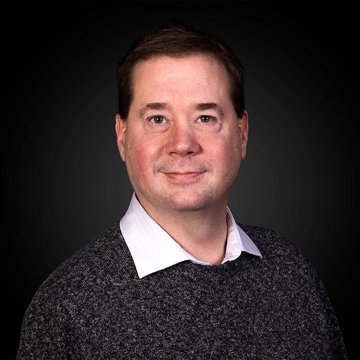There are many factors that affect the current changes in the global ecosystem in the Artic Ocean. Researchers from the Alfred Wegener Institute have been trying to find the underlying cause of this issue. The most daring action they have taken thus far is the MOSAiC expedition. The research vessel Polarstern has been frozen in the ice of the Arctic winter for one year, serving as a base station for a variety of experiments. In addition, scientists are using high-tech equipment elsewhere in their work to non-invasively observe the sea floor.
At its underwater observatory “Hausgarten,” the Alfred Wegener Institute (AWI) Helmholtz Centre for Polar and Marine Research has been observing the water, fauna, and (micro)flora in the Fram Strait since 1999. Both the warm, saline West Spitsbergen Current and the cold, low-salt East Greenland Current flow through the 500 km wide strait. This makes it the Arctic Ocean’s only deep-water connection to the system of the world’s oceans, which is crucial for the exchange of oxygen and nutrients and an important variable in the global climate system.
Autonomous Measuring Stations
Hausgarten has twenty-one stations with free-fall devices that serve as observation platforms on the seabed, covering depths between 250 meters and 5500 meters. In addition to the physical properties of sea water (temperature, salt content, and nutrient content), researchers observe the Arctic microflora and fauna. During the ice-free summer months, they use additional equipment of a remote-controlled underwater vehicle that takes specific samples at regular intervals, with experiments carried out on site. An autonomous mini submarine traverses all vertical water layers to record the course and interaction of biochemical processes. At depths of up to 3000 meters, it is also used for large-scale observations on the seabed.
Pictures from Depths of 5000 meters
The most important research equipment at Hausgarten includes camera systems towed by ships, such as the ocean floor observation system (OFOS) and the ocean floor observation and bathymetry system (OFOBS). High-resolution images of the sea floor are captured using a vertically-downward-aligned digital SLR camera, a video camera, spotlights, and flash lamps. The OFOBS is also equipped with a sonar system. All the components are housed in such a way that withstand the enormous pressure load at water depths of up to 6000 meters. OFOS and OFOBS are lowered on a steel cable to approx. 1.5 meters above the sea floor to not affect the structures being recorded. The cable accommodates fiber optic cables for data and video transmission, and a copper cable for the power supply. A research vessel pulls the structure weighing several tons through the area to be surveyed at 1 km/h. During this process, the video camera takes HD recordings of the seabed, while the single-frame camera provides a 23-megapixel snapshot every 30 seconds.
Lasers Used to Survey Deep-sea Objects
To use the data obtained from the cameras scientifically, the size of the surveyed objects is recorded. This is done with the help of three powerful FLEXPOINT dot laser modules. These modules are mounted in an equilateral triangle around a single image camera. Each of the three (3) modules is set at 50 cm, with visible red dots on each image. Scientists determine the number of pixels between the dots that estimate the actual size of the depicted objects. The use of three lasers also make it possible to determine the size of an object on uneven ground, as the distances between the dots no longer form an exact equilateral triangle. A 635 nm wavelength was chosen, ensuring that the laser dots on the images are optimally visible. A 50 mW output also ensures no over-illumination, when using strong headlights and flash lamps.
Size Matters
There are several reasons why scientists want and need to determine the size of seafloor objects. These include looking at the size of a particular area that is more likely to contain young or adult fish and crabs. If distances can be measured, they can also determine the size of geological structures (black smokers, hydrothermal vents, mineral resources), etc. In addition, size determination also helps in assessing the amount of plastic waste deposited on the ocean floor, now a huge global environmental hazard. This has also become a concern with worrisome dimensions in the Fram Strait, in the deep-sea trenches off the Portuguese coast.
Autors
DR. AUTUN PURSER
Dr. Autun Purser is a scientist specializing in deep-sea ecology at the Alfred Wegener Institute in Bremerhaven. With the help of lasers, he was able to measure the deepest-existing octopod eggs ever observed as part of his current research.
Dipl.-Ing. (FH) BURKHARD SABLOTNY
Burkhard Sablotny has been working in marine research since 1988 with a focus on deep-sea technology, twenty-four years of which he has spent at the Alfred Wegener Institute.
The Alfred Wegener Institute (AWI) Helmholtz Centre for Polar and Marine Research: www.awi.de
FLEXPOINT modules are now used in various underwater missions. Not only are dot lasers used, but MV modules for industrial image processing as well. Using remotely operated vehicles (ROVs) and autonomous underwater vehicles (AUVs), they scan the sea floor and provide detailed 3D data on corals, shipwrecks, and offshore facilities. We offer modules with wavelengths between 405 nm and 905 nm for other applications. The output power can be customized from a few microwatts to 100 mW.








